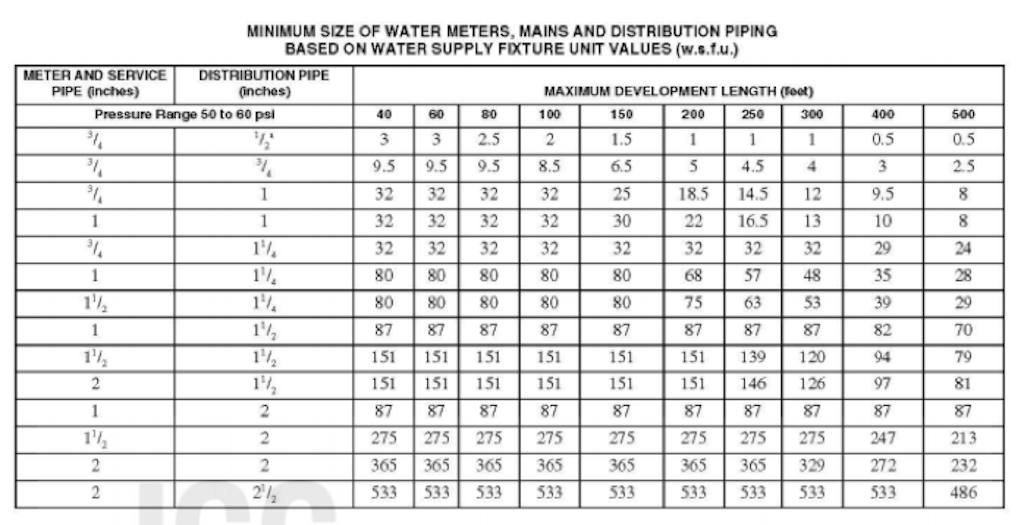Pex Sizes Gpm

For this reason you need to be careful when replacing a copper or PE tube with a PEX tube. Often when replacing a copper or PE tube with a PEX tube it is necessary to use PEX that is one size larger than the tube it is replacing. So if you are replacing a 3/4″ copper tube with PEX, you should consider using 1″ size PEX tube for the replacement. These suggested tubing sizes are based on a 20 degree temperature drop using a 50/50 water/glycol blend. Flow rates are assumed to be 10 gpm for the category 1 boilers, 14 gpm for the category 2 boilers, 18 gpm for the category 3 boilers, and 20 gpm for the category 4 boilers (See the formula at the end of this document to see how these flow rates are derived).

Cross-Linked Polyethylene Tubing or PEX plumbing systems have become the norm in new building today with companies continue to find new and innovative uses for the resource. In addition to replacing copper tubing for many traditional plumbing needs it is also an idea choice for radiant floor heating and now quickly becoming a popular option for fire sprinkler installations. Unfortunately all PEX systems are not uniformly configured and there are several systems to consider, hopefully this will give a little background on the different options out there.

As history will tell us it is common for there to be many players in new technologies but eventually 1 or 2 main players with emerge and they become the standard. Early adopters of Betamax, MiniDiscs & HDDVD will tell you after shelling out small fortunes for the newest gear it can be painful to see you technology never take off. Even though Betamax was a high quality than VHS, it matters little when the technology is gone, majority rules.
PEX plumbing systems are kind of similar, while the tubing itself is standard (PEX-a, PEX-b or PEX-c) there are several proprietary options for the fittings. One thing you don’t want to happen if you are a professional installer is to have your system go away and all the work you have done over many years be with the “Betamax” of PEX Systems.
The two most popular systems on the market today are the Uponor (ProPEX, Wirsbo & AquaPEX) and Viega (PureFlow, ViegaPEX & ProPress) nothing against any other brands but we wanted to focus on these two and look at some of the differences between them. Since we are a tool blog we will also spend some time looking at the fitting tools and how each of those work.
The Uponor system uses the PEX-a tubing which is the most freeze resistant & most flexible PEX tubing available. The fitting system works by expanding the tube then inserting the fitting and utilizing the inherent shape memory of PEX to seal the fitting. A representative for Uponor add “Expanding the tubing allows the use of a larger-diameter fitting, which minimizes restrictions and allows higher flow rates. For 1' tubing connections, Uponor’s ProPEX fitting has 12% greater internal diameter (i.d.) and 25% greater gallons-per-minute (gpm) flow rate than an insert fitting. This is particularly important with the increasing use of PEX in residential fire sprinkler systems, where lower-flow fittings may require larger tubing sizes and additional sprinkler heads.”
There are several options for fitting tools including manual tools as well as Milwaukee M12 & M18 Expanding Pex Tools. The manual tools ($150+ heads) are going to be very labor intensive to use with the larger fittings or continuously all day long; better suited for the handyman with occasional repair work. The Milwaukee M12($399, Ohio Power Tool) and Milwaukee M18($699, Ohio Power Tool) are going to be ideal for installation usage with the M12 for smaller diameter PEX and M18 that can handle the entire range of sizes. The Uponor fitting rings are inexpensive as they appear to simply be a small piece of the next size up PEX tubing (although not confirmed) if that is the case and you were in a pinch you could just cut some more yourself.
The Viega PEX system uses the PEX-b tubing (although you could also use another brands PEX-a) and a pressed ring securing the PEX to the fittings. Some advantages with the pressing system is that the fitting are now available with press rings already built-in. For installation the PEX is simply inserted into the fitting and pressed which savers time and makes it so you’ll never run out of the press rings. The downside for the pressing systems is that the fitting have a slightly smaller internal diamete (i.d.) therefore less water can get through vs an expanded fitting system on the same size PEX tube.
Pex Sizes Gpm Fittings
With the Viega PEX system you can use manual press tools ($215-380 per size) or automatic Ridgid ProPress Tools. One very large advantage for the Ridgid ProPress (210-B with PEX Jaws) is that you can not only use it with the PEX system but with a simple change of head you can use it for pressing copper and stainless steel pipe & fittings. For situations where you are working with existing plumbing or have work that requires copper you could see these tools being a big advantage. The Ridgid ProPress even has a soil pipe cutter attachment (works with 330-B model), so it is a very versatile system.
Pex Sizes Gpm Vs
For more information directly from the company representatives of Uponor, Viega and Watts checkout this article that was in the Reeves Journal talking about PEX systems and the future of the business.